That Fragile Space Between Life and Death
Bill’s dad had finished his coffee and headed out to check the oil in the old motor home before they took off which left Bill and I sitting at the kitchen table with Bill’s Mom. It was the beginning of camping season. Bill’s parents had stopped for a brief visit in their motor home on way to tour the U.P. Their favorite destination spot was an RV campground on the shores of Lake superior.
Bills mom sat silent for a few minutes, her fingers wrapped gingerly around her coffee cup. She took on a far away look for a few seconds. “You know life is like a slow walk up a hill,” she lamented, “slowly you pull the toboggan to the top of the hill, when you get there and finally climb on the toboggan in an instant it slams you to the ground and the ride is over. Take care of your health, kids, be sure you take care of your health.” She got up from the table, put her coffee cup in the sink and went outdoors to find Dad. Her cryptic message to us was that she letting us know she was sick. It was a short 6 years later she was gone. This dear woman had been fighting colon cancer for years, she strictly forbade Dad from telling any of us.
She was right, you know, lots of people are getting slammed. Over the course of the next 10-12 years or so we lost on average 3 people a year, 2 sisters,(1 of his and 1 of mine) 2 Dads( his and mine), various uncles and aunts, cousins, friends, acquaintances and neighbors. It seemed like people were dropping like flies. These poor souls were stricken with cancer, heart conditions, falls, accidents and other conditions and damage detrimental to the human body. Then one day out of the blue it was our turn.
Bill had been in bed feeling like he had the flu since Friday. Suddenly I heard him hollering for me from the back deck. I found myself enjoying being out in the yard on this warm August Sunday afternoon playing in the garden. “You gotta take me to the hospital.” He demanded, as he bent over clutching his stomach. “Somethings not right, we gotta go now!” He was weak, short of breath, and his skin was an odd sort of gray color. He was in so much pain he could barely get himself into the car. I was scared!
When we arrived at the hospital the first thing they did was triage him. The nurse asked a bunch of questions then hooked him up to a blood pressure machine. “That can’t be right, it must be broken,” She claimed. On a recheck from different machine, she was shocked and immediately put him into a wheel chair and rushed him back to emergency. His blood pressure was 84 over 50, it’s was why she thought her machine was malfunctioning. Doctor came into the room, doctor left the room another doctor came in and then he left. Labs were taken and an x-ray was taken. Less than 2 hours later they were rushing him in to emergency surgery. It all happened so fast.
Once the surgeon had the scopes in place in his chest, he could see the gallbladder. It was so full of stones and gunk that the gallstones had closed off most all of the blood flow to it creating the perfect condition for gangrene to thrive. Bill had a gangrenous gallbladder, the surgeon told us later. Now to save his life the he needed to remove the gallbladder which turned out to be a very difficult proposition due to the fact that half the organ had turned to jelly. The gangrenous toxins escaped despite the surgeons best efforts and began surging throughout Bill’s body. It was so toxic the doctors couldn’t believe that Bill had had no symptoms until he became sick on Friday. The surgeon said “worse case I’ve seen he was a miracle, a miracle he survived.”
https://www.hopkinsmedicine.org/healthlibrary/conditions/infectious_diseases/gangrene_134,151
Bill’s whole body was now septic. Toxic nasties cursing his veins, hell bent on destroying his organs and body. He lay in that narrow space between life and death.
https://www.cdc.gov/sepsis/what-is-sepsis.html
For 11 days in ICU his body fought to stay alive, a ventilator doing the breathing for him. A chemical induced coma so the surge of antibiotics and various other medicines could do their work undisturbed. There he lay, 15 IV’s full of life saving medicine running into his arms and groin area. A few days later 2 ports were created in his upper shoulder area for even more medicine. At one point the nurses and doctors were buzzing around his room trying to bring down a fever of 106.5. More medicine, more panic. They were successful, however, and by day number 6 he was still holding his own but his condition hadn’t gotten any worse despite the fever. That was good news, although it had now been 10 days since Bill had eaten food of any kind.
It emotionally rips your heart out to watch your once vibrant loved one lying there motionless, wasting away, relying absolutely on nurses, doctors and modern science for his very life. One nurse told me that they had already put at least 20 pounds of saline and antibiotics through his system to help flush out the sepsis bacteria. That’s a lot of flushing and they weren’t done yet.
I was sitting next to my husbands mechanical hospital bed one evening mesmerized by the rhythmic beeps, and humming of the computerized machines keeping his body alive when I suddenly remembered an article I had read a few months earlier of an experimental treatment for sepsis. I left the hospital a little earlier than normal this night, went straight home to fire up my computer determined to find the information on this unproven treatment.
Sure enough, I found it. Vitamin C, B1 and cordisteroids, the combination was new and experimental but it turned out there was plenty of information and doctors were already using it in some hospitals to treat sepsis patients.
https://www.webmd.com/drug-medication/news/20180521/vitamin-cocktail-for-sepsis-getting-wider-test
I took this information and several case studies into the hospital and presented it to my husband’s doctor. I was sure he would simply brush me off as a desperate old lady just doing anything to save her dying husband. Imagine my shock and excitement when the doctor actually said he would look into it.
A few hours later he came back into the room to tell me that it took awhile to find some vitamin C cocktail because our pharmacy didn’t have it, but that he had in fact found a source, but did I know that this combination wasn’t FDA approved? Yes, I assured him, I knew. Ok, Dr. B said as he turned on his heel and left the room. The next day he came into the room to let me know that he had some vitamin C cocktail delivered overnight and nurses were going to hook hubby up with an IV of this experimental cocktail shortly. Oh, thank you, thank you Dr. B!! But wait! What if this was a mistake? I should not have interfered with standard hospital protocol for sepsis patient treatment. All kinds of stuff ran through my brain. Again, I was scared.
The first day of the experimental cocktail showed nothing new at least to my untrained eye. Bill’s 4 sisters drove up from lower Michigan and were now weeping over their brother’s bedside, one of his daughters, her husband and me, were gathered around Bills mechanical bed and a dozen humming, beeping computerized machines. The 8 of us and two nurses held good loving thoughts and energy in our hearts and said prayers over Bill as lay there unaware that so many people were cheering him on. Beth (his daughter) anointed his forehead with holy water as we said another prayer and wished Bill a speedy recovery.
Dear husband slept well that night his overnight nurse reported and by day number 3 of the experimental cocktail his lab tests indicated much improvement. When the doctor came in to check on him in the morning, he stood there, seriously contemplating the humming, beeping machines. “We going to start the waking up process today.” he said. “Give us an about an hour or so to get things ready.” I was so emotional I could barely contain myself. He was going to live! Even now writing this gets me all emotional and goose bumpy.
I knew in my heart there would be a long road ahead even as the doctor was explaining this to me. Bill had severe muscle wasting from lack of movement, he had lost at this point, about 85 pounds. (Did you know that ICU mechanical beds periodically take the patient’s weight? Amazing.) Bill had already been diagnosed with beginning stages of heart disease before this ordeal, the sepsis weakened his heart tremendously and at faster rate than he normally would have experienced had he not had sepsis. So he did end up in a nursing home for a few weeks. There was no way I could take care of him myself, he was totally helpless. He could only sit up in bed with help and couldn’t hold his own weight to stand at all. It took two people to move him even in bed. At the nursing home they gave him therapy and showed him how to strengthen his muscles. But, damn! He did it! The guy is a miracle! By the time he left the nursing home he could stand for a few minutes and climb about 4 steps which was all that was needed to get him into the house.
Was it the vitamin C, B1 and cordisteroids combination or was it all the loving energy and prayer that did it or a combination of both? Only God knows for sure.
It has been quite the toboggan ride since August and the real miracle is that we get to celebrate Christmas with him. The sad part is that he has a month of no memory. A hole in his life, he calls it. Drug induced coma, sedation medication and pain medication took away most of his summer. Just 3 days ago Bill had a pacemaker put in to help his ailing heart muscle. He’ll have two doctor appointments a month for a while but that should slow down eventually.
Before I close out this tale of Christmas joy, there are two very important things that came to the foreground in all of this. Some might call them lessons.
Doctors are the mechanics of the health care industry. Very special people they are. They get a gold star. Becoming a doctor is a daunting task on it’s own, then specializing adds extra years of dedicated learning. But the ICU nurses are the angels, they are the life blood of any hospital. They know the heart and soul of a patient and deal with life and death on a personal daily basis. The stress these angels go through when a new patient arrives in their unit is unbelievable. These nurses trip over family members while running the IV’s, dispense the proper doses of meds at the directed moment, change bandages and see to the patients comfort. They clean, care and administer loving kindness to the most vulnerable day in and day out. There is no payment or gratitude big enough for these front line individuals. All I can offer is a heart-felt thank you and a hug.
Secondly, Why are there so many sick people?
During the 5 weeks my husband was hospitalized I had the opportunity to watch the comings and goings of people needing treatment of one kind or another. There were so many. We live in a small community, at least 65% of this community came through the hospital doors while I was there. (I’m sure this is an exaggeration, but you get the point.) The other 25% worked there. That left about 10% healthy? Really?
Again, why are so many people sick? In Bill’s case we can trace it back to 32 years of chemicals in the work place, 32 years of putting plastic in the microwave to heat his lunch, and 40 years of blood pressure medication. Throw in other variables like years of drinking diet soda, fast food, horrible stress from a previous marriage. It’s all accumulative. It’s accumulative, means it keeps getting piled on in the body.
His thyroid had been destroyed from several blasts of chlorine gas in his work place. Eating food from the microwave heated in plastic. The BPA in plastic is an endocrine disruptor for starters. Toxic chemicals in fast food and aspartame in diet sodas also contribute to his case of heart disease. Our modern commercial lifestyle is a downhill slide until it slams you to the ground.
Another item is the 40 years of blood pressure medicine without asking why he needed it or suggesting he consider a lifestyle change to correct it and given information. Oh, it genetic, they say. Hold on there pal, listen up. Genes are only 30% of the equation, life style and environment are the other 70%.
I taught a couple of classes at the local college a few years back as an adjunct. The first thing I asked the incoming 20 something age students was, “What do you want to be doing in 80 years?” They’d look at me like I had 3 eyes. They either hadn’t thought about it or they simply didn’t believe they would live to 100. “The human body was designed to live 120 years,” I’d offer. The human body wants and is designed to be healthy whether you want to believe it or not. Give it what it needs, treat it right and every one can live to a ripe old age. I’d get, “yeah, right” looks every time. I lost my credibility after that it seemed.
On the tiny island of Okinawa, Japan I’d tell them, they have some of the longest lived people on earth. You are not even consider an adult until they reach the age of 55.
By then some of the male students cross their arms over their chest and with a snide retort, “You and your facts aren’t going to change the way I eat and live.” And this is the lesson, that sacred space between life and a nursing home bed. Or death.




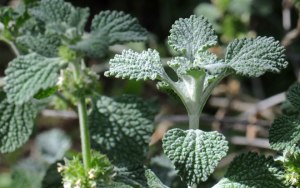
 (Her story and that of others who lived before or without electricity can be found in my book, How to Survive and Thrive When the Power is Out.)
(Her story and that of others who lived before or without electricity can be found in my book, How to Survive and Thrive When the Power is Out.) 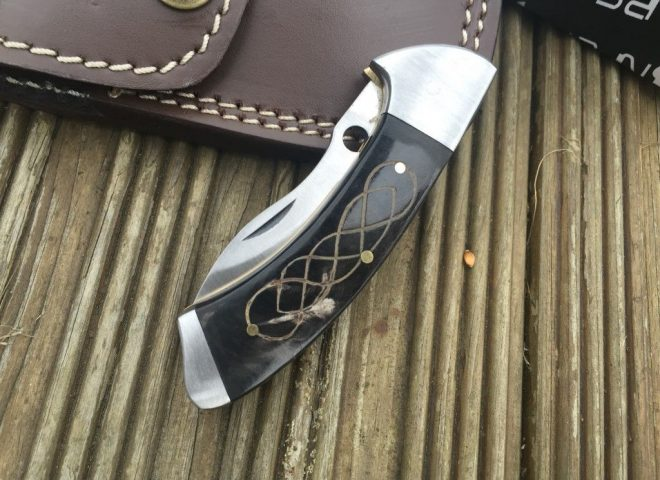

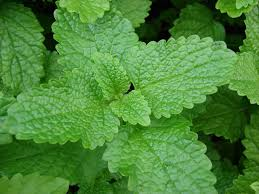 is lemon-like, later becoming astringent to balm-like and warming.
is lemon-like, later becoming astringent to balm-like and warming. oder.
oder.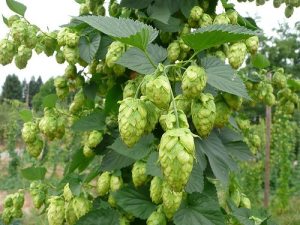 quickly dried, packaged and popped into the freezer to preserve their potency.
quickly dried, packaged and popped into the freezer to preserve their potency.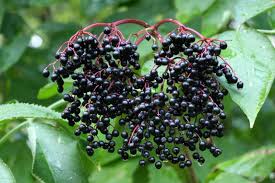
 respiratory infections.
respiratory infections.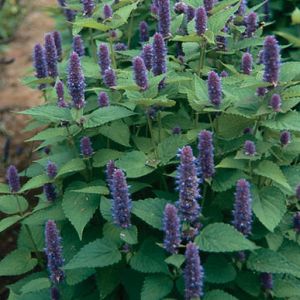 spasmolytic (relieves spasms of smooth muscles). Preparations of hyssop herb are used for gentle circulation, for diseases of the respiratory tract, colds, chest and lung ailments.
spasmolytic (relieves spasms of smooth muscles). Preparations of hyssop herb are used for gentle circulation, for diseases of the respiratory tract, colds, chest and lung ailments.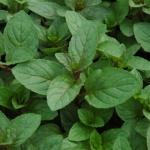 hung in a warm, shaded room to dry. It can be harvested a couple of times during the growing season.
hung in a warm, shaded room to dry. It can be harvested a couple of times during the growing season.